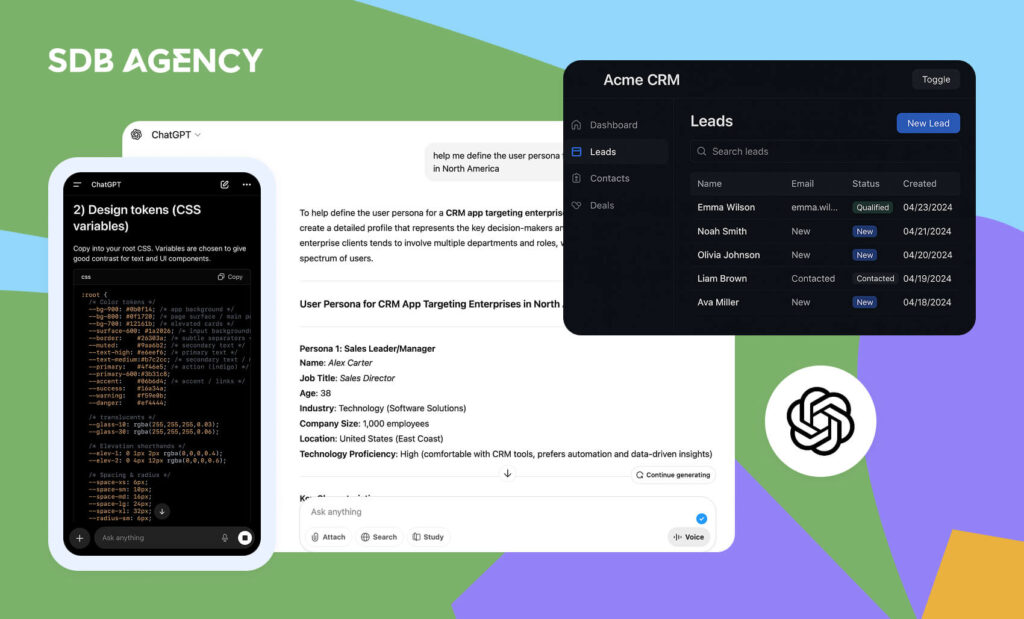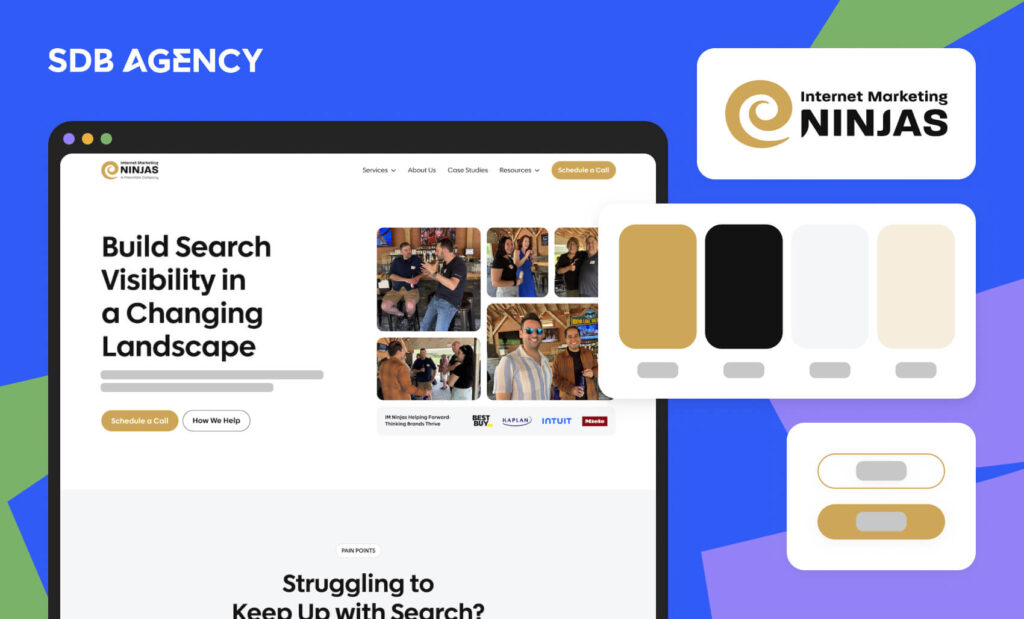Design Research – Why Do You Need it?

Key takeaways
- Design research is a framework that allows you to discover who your customers are and the problems they face.
- Conducting design research can help you understand users’ behavior and feelings about your product, enabling you to make better decisions about its design and functionality.
- The key steps in conducting design research include defining the elements you want to improve on, gathering demographics and design patterns, analyzing your competitors, and finding ways to implement user feedback.
Developing products and services for everyday users strongly relies on design research. It is the backbone of a good user experience, ensuring optimal usability and increased customer satisfaction. A great design is the result of effective design research, leading to impressive returns for businesses such as tech and SaaS companies.
Despite all the benefits, businesses usually overlook design research, as only some people understand its value outside the design industry. In this article, we’ll look at the fundamentals of design research, when you should conduct it, and how it benefits a product when applied correctly.
What is design research?
Design research involves learning a system or product’s end users’ desires and then implementing those insights to enhance the design process of the services, products, or software. It’s a customer-focused framework of research methods that lets you uncover:
- Who your customers are
- What kinds of problems they’re facing
- How and why they should use your product
Design researchers study users’ motivations, behaviors, and needs by analyzing how they perform specific tasks. They also approach testing by directly working with users, remotely observing them using digital tools or conducting surveys that collect user feedback, letting them create better and more satisfying products.
Let’s look at the benefits that design research can provide to your business:
Help learn consumer behavior

Understanding users’ behavior is essential to creating suitable products. Design research helps businesses understand their users’ expectations and usage contexts, helping them better understand the product requirements.
After all, connecting with the people you’re designing for will help you develop empathy and care for their needs, allowing you to make more informed decisions every day.
Additionally, understanding users’ behavior provides a foundation for making iterative improvements over time. By continuously gathering feedback and analyzing how users interact with a product, designers can refine and enhance features that may not have been initially apparent. This iterative process helps in creating a more intuitive user journey and reduces the risk of designing products that miss the mark. Ultimately, it fosters stronger relationships between businesses and users, as products evolve based on real-world needs and preferences, leading to higher customer satisfaction and loyalty.
Discover actionable insights

One of the most challenging things designers must do is translate raw qualitative and quantitative methods into online products that offer great experiences. Things such as creating logos or figuring out where to place specific buttons may take weeks of research and ideation.
Doing in-depth research lets designers extract valuable insights, making it easier to craft interfaces and experiences that accurately fit a user’s persona.
By understanding user behavior, preferences, and pain points, designers can make informed decisions about the aesthetics and functionality of a product. This process ensures that every design choice aligns with the needs and expectations of the target audience. In turn, it helps create seamless, intuitive experiences that not only look good but also work efficiently, fostering stronger user engagement and satisfaction.
To consider irrationality

Humans are subject to several biases that may harm good design. For example, we assume that human behavior is easily predictable and rational when it’s actually not. A growing number of studies explore the irrationality of how humans make their decisions, especially when asked to explain their reasons. We have reasons for the decisions we make, but there are also other variables during the decision-making process that involve a lot of spontaneity. To put it simply, understanding people is challenging as we often don’t even understand ourselves.
This is why considering all the variables of human emotions is important. The last thing designers want to do is make false conclusions about them. Once you remember that you are not your users, you can create better and more useful experiences.
To receive a better bottom line for less money

Even though designers should always focus on their users’ experience, business goals are equally important. However, there’s a catch: as UX itself offers a stellar ROI, higher management should also consider investing in activities like design research to help designers deliver impressive returns. Even though research costs money, the value it yields will be worthwhile.
Steps in conducting design research
Due to the constantly changing nature of the markets, it’s important to have a proper research plan to ensure your product will stand out from the competition. Most design research takes place during the prototype phases. This helps inform design decisions and tests them with end users. Design research should also take place every time you add new features, create new pages, or do a full website redesign.
After you understand when to conduct a research design, here are the steps for executing an effective research design.
Step 1: Define UX objectives
Start by defining clear UX objectives. Which aspect do you want to improve on? This can be anything from increasing users’ engagement, enhancing usability, reducing churn or simplifying features. These objectives must be specific, relevant, and measurable.
Step 2: Understand your users
Create detailed personas that represent the users of your product. This involves gathering demographic information, goals, challenges, behavioral patterns, and motivations. To create these personas, you can use existing customer data, surveys, and interviews.
Step 3: Do a competitive analysis
Analyze competitors to discover your industry’s standard practices and find ways to make your product unique and appealing. You can check out their product features, customer service, user experience, and pricing. Tools such as SWOT analysis (Strengths, Weaknesses, Opportunities, Threats) will be useful here.
Step 4: Map user journeys
Create user journey maps for every persona. This involves outlining the steps every persona takes from the first contact with your product through regular use. Look for any pain points users might experience when using your product.
Step 5: Gather user feedback
Implement ways to gather direct user feedback. You can do this through usability testing, surveys, and interviews. The feedback should help you understand how users interact with your product, their frustrations, and whether they find a feature useful or lacking.
Step 6: Create prototypes
After you’ve collected enough insights, it’s time to design and create prototypes for potential improvements. These prototypes should address the users’ pain points that we mentioned earlier. You can use Sketch, Figma or Adobe XD tools to create these prototypes.
Step 7: Validate and iterate
Test your prototypes with real users to validate whether the problems have been addressed. Use A/B testing, feedback loops, and user testing sessions to gather data on the new designs. Iterate on the designs based on the feedback before finalizing them.
Even after implementing these steps, it’s important to continuously improve your product based on ongoing user feedback and re-evaluation of their needs. Remember that UX design isn’t only a one-time task but a continuous effort to improve the ever-changing nature of user satisfaction and engagement.
The bottom line
To create a product that meets the users’ needs and improves their lives, designers must interact with them and get them to provide us with feedback. Unfortunately, many designers make inaccurate assumptions about the people they’re developing for, and one of the first steps in letting go of these assumptions is by letting the users be the experts.
Design can be difficult and ambiguous sometimes, but that shouldn’t stop you from continuously experimenting and finding suitable solutions. Research isn’t something businesses can ignore—it’s one of the few ways to ensure you won’t be designing the wrong thing.




